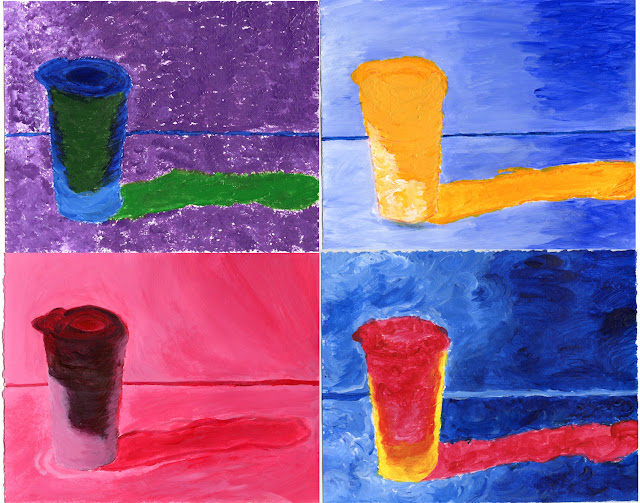Which project do you consider your most successful? How did you develop your craft with this assignment? What tools, methods and materials were essential to your success with this project? What ideas, feelings or meanings did you want your piece to express? How did you go about expressing it?

I would consider either my pop art or my recent form sculpture was the most successful. For the pop art, I felt that I was able to experiment with the colors more successfully. Also, during the pop art project, I felt that I had a lot more time to consider the colors and brush strokes of each painting. I also found it helpful that we had access to pictures of our object which clearly demonstrated the light scale which was helpful for me as I was painting because I could decide where to place the lighter and darker shades of paint. I think that it was also helpful that we had spent a lot of time and different steps about learning colors and different related concepts. For the pop art project, I had wanted to successfully convey the different color schemes such as complementary or triadic color schemes. I expressed it by carefully testing the different shades of each color before starting my final painting. I also thought that my most recent plaster sculpture was also successful. I was able to slightly alter my sculpture because I was given a block of plaster that was a lot shorter than I had expected.
Which project was the most challenging? Look at your brainstorming for this project. How does the final work(s) resemble your preliminary sketches? What changed? Why did you make the changes that you did? What problems emerged in the creation of this project? How did you solve the problems?
Texture Sculpture |
Please discuss three new strengths you've discovered or deepened this year. One formal strength (your ability to work with things like composition, balance, rhythm et cetera), one technical or media-specific strength (working in a specific medium or honing a specific skill) and one conceptual strength (you idea development in the specific project).
I think that a strength that I have definitely developed includes being able to "improvise" as I work on projects. Sometimes, my plan for my project does not ultimately end up being the same as I had expected and so I have learned how to accept these slight changes and incorporate it into my project. I think that a formal strength includes working with symmetry or even color scales. I would say that my technical/media-specific strength would be the pop art project. I was successfully able to use the different color schemes and experiment with my brush strokes. I would actually consider my conceptual strength to be being able to be more flexible with changes in my project that might have differed from my original plan.

.JPG)














.JPG)